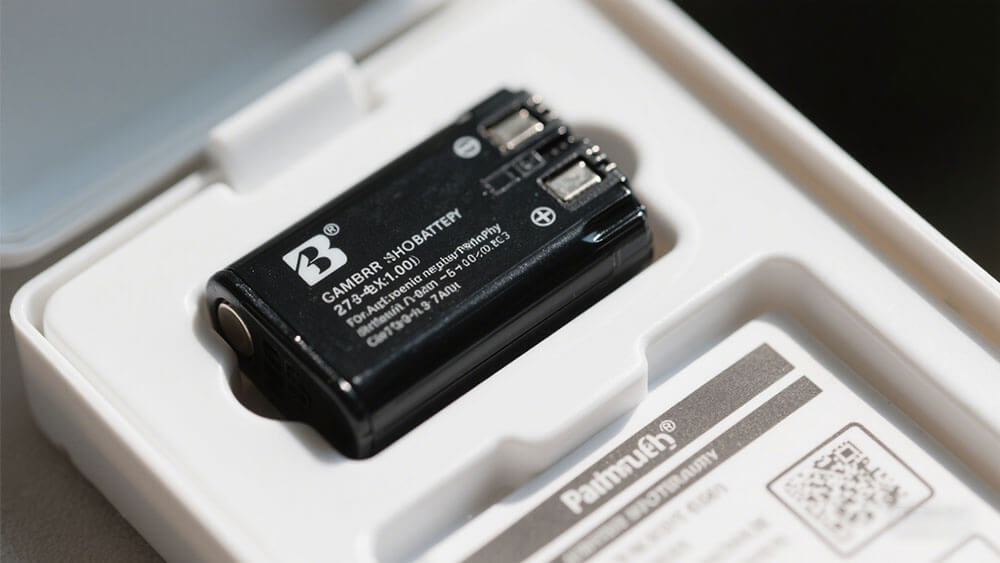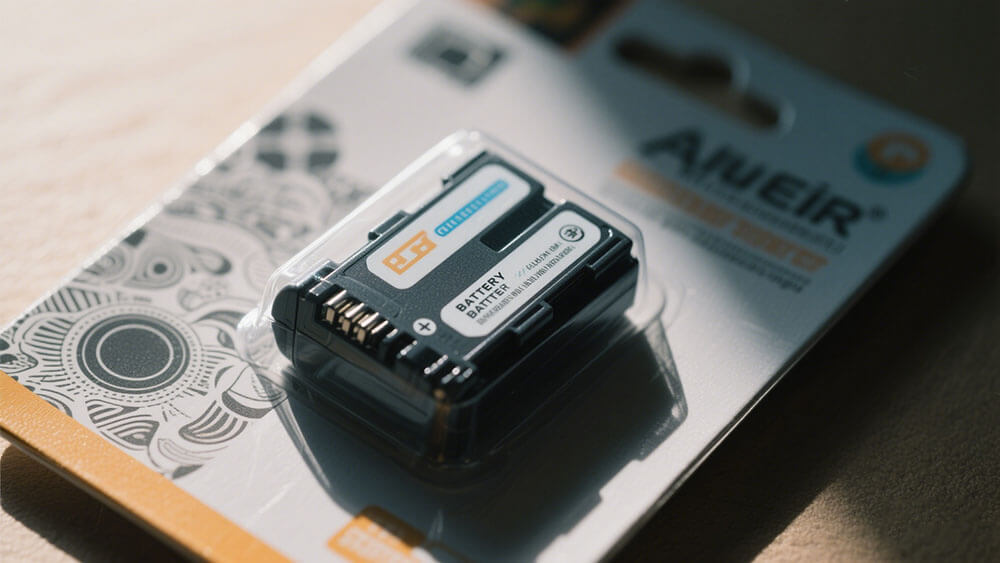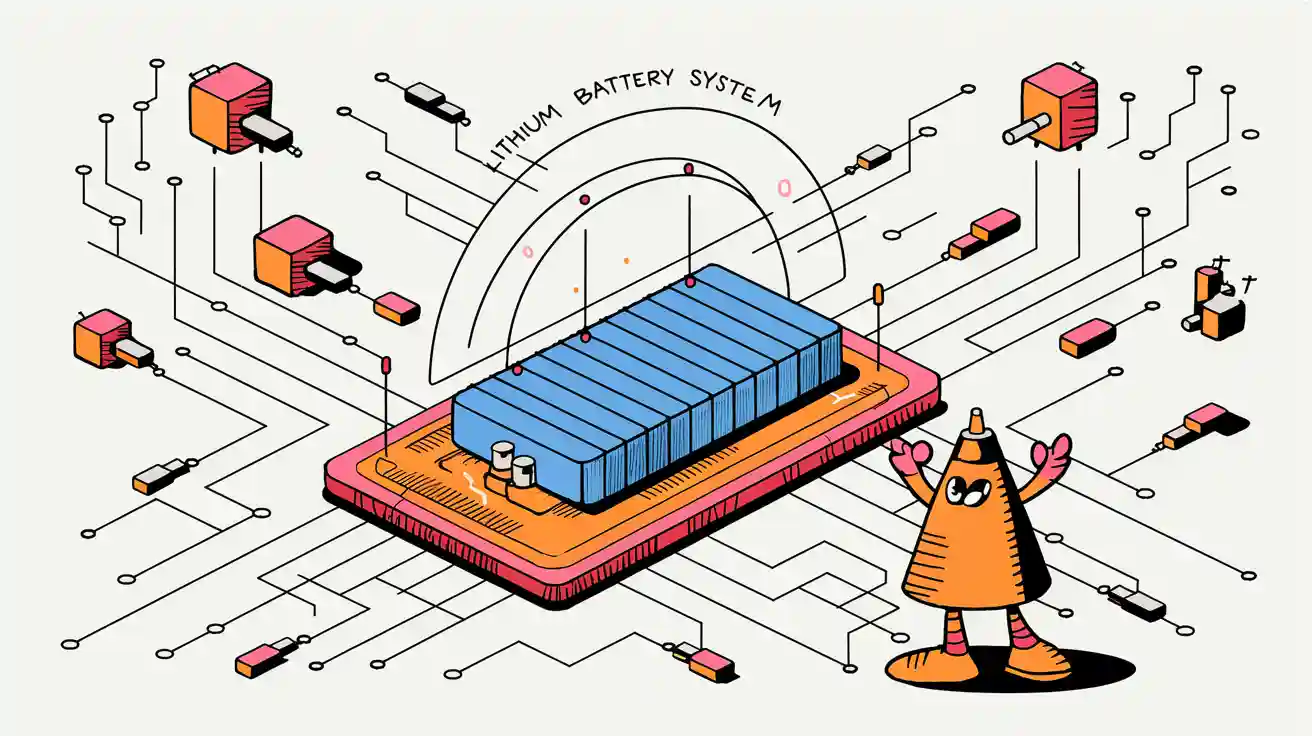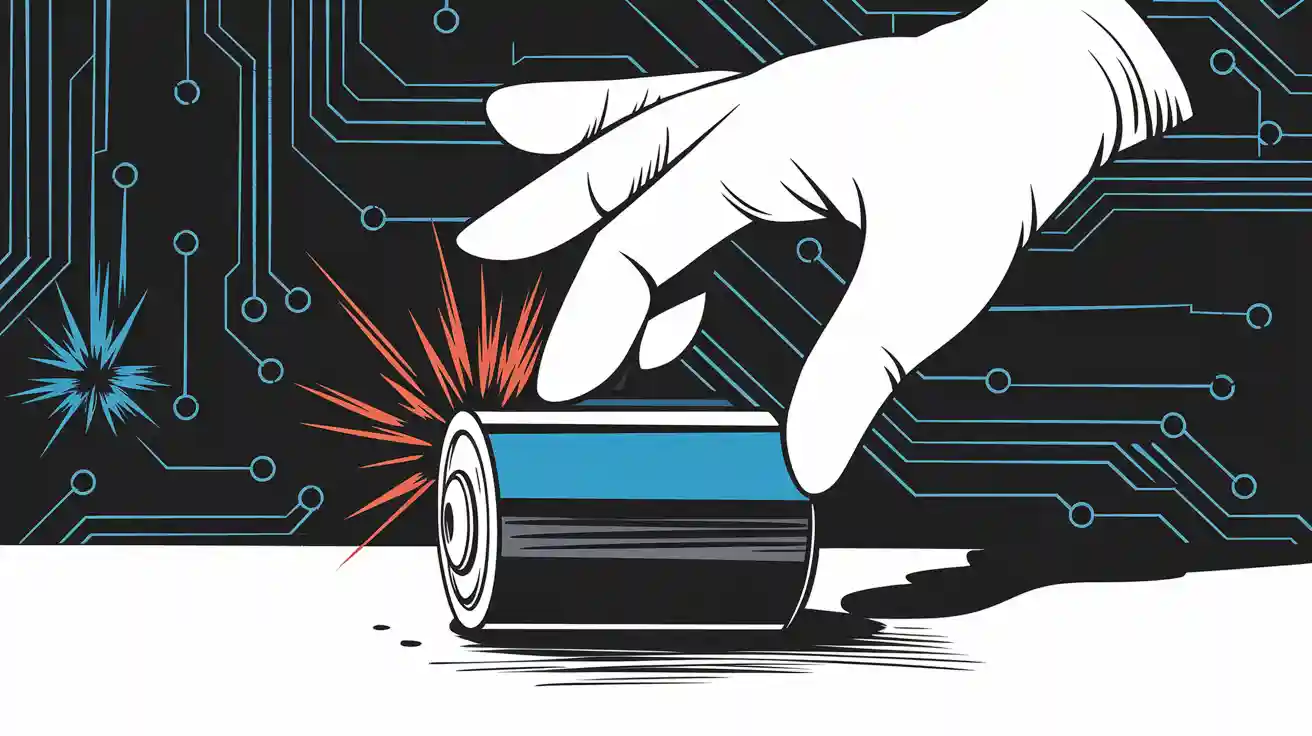Contents

When you evaluate battery options, the 100Ah lithium battery stands out for its exceptional performance. Lithium batteries offer higher energy density, with LiFePO4 batteries providing 100–180 Wh/kg compared to just 30–50 Wh/kg in lead-acid batteries. Their extended lifespan, often exceeding 5,000 cycles, and faster charging rates make them ideal for demanding applications. However, their sensitivity to extreme temperatures and higher upfront costs may pose challenges. Compared to traditional batteries, lithium-ion models deliver superior efficiency, durability, and long-term savings, making them a compelling choice for businesses seeking reliability and sustainability.
Key Takeaways
100Ah lithium batteries store more energy in less space. They are great for small spaces like RVs and boats.
Lithium batteries last longer, up to 5,000 charges. This saves money and lowers upkeep for businesses.
They charge and discharge quickly, making them good for busy uses. This helps reduce delays in important tasks.
Part 1: Advantages of 100Ah Lithium Batteries

1.1 Higher Energy Density and Compact Design
One of the most significant advantages of a 100Ah lithium battery is its high energy density. Compared to traditional lead-acid batteries, lithium batteries store more energy in a smaller and lighter package. For instance, LiFePO4 batteries offer an energy density of 100–180 Wh/kg, while lead-acid batteries only provide 30–50 Wh/kg. This compact design makes lithium batteries ideal for applications where space and weight are critical, such as in boats, RVs, and portable power systems.
A data center in California replaced its lead-acid batteries with 12V 100Ah LiFePO4 batteries, achieving a 40% reduction in weight and a 50% reduction in space requirements. This change not only improved operational efficiency but also reduced maintenance costs. Similarly, a telecom company in Asia reported a 60% reduction in battery-related maintenance after upgrading to lithium-ion batteries. These examples highlight how lithium batteries outperform traditional options in terms of energy density and space efficiency.
1.2 Longer Lifespan and Charge Cycle Durability
Lithium batteries, particularly LiFePO4 models, are known for their longer lifespan and durable charge cycles. While lead-acid batteries typically last 200–500 cycles, LiFePO4 batteries can endure 2,000–5,000 cycles, translating to 10–15 years of reliable performance. This longevity significantly reduces the cost per cycle, making lithium batteries a cost-effective choice for long-term applications.
For example, a fisherman using a lithium-ion deep cycle battery for his trolling motor reported significantly better performance and durability compared to his previous lead-acid battery. This durability makes lithium batteries an excellent choice for businesses seeking long-term reliability and reduced maintenance costs.
1.3 Faster Charging and Discharge Efficiency
Faster charging is another key advantage of 100Ah lithium batteries. These batteries can handle higher charge and discharge rates, allowing them to recharge quickly and deliver energy efficiently. Research by Goodenough and Kim (2010) found that LiFePO4 batteries support discharge rates of up to 10C, far surpassing the capabilities of lead-acid batteries.
Metric | Description |
|---|---|
Capacity | 100Ah indicates the total charge the battery can store, allowing for longer operation times. |
Energy Density | High energy density compared to lead-acid batteries enables compact designs in space-constrained applications. |
Voltage Stability | Maintains a stable voltage during discharge, crucial for the performance of connected devices. |
Power Output | High power output capability allows for quick energy delivery, essential for applications like robot. |
Cycle Life | Long cycle life achieved through advanced materials and battery management systems, enhancing longevity. |
For businesses relying on uninterrupted power, such as data centers or telecom companies, the faster charging capability of lithium batteries ensures minimal downtime. This efficiency makes them a preferred choice for high-performance applications.
1.4 Enhanced Safety Features in Modern Lithium Batteries
Modern lithium batteries come equipped with advanced safety features, addressing concerns about thermal runaway and other risks. Certifications like UL 2580 and BCI Standards validate their compliance with rigorous safety and performance requirements. Additionally, built-in protection circuits and advanced battery management systems (BMS) enhance their reliability.
Certification | Description |
|---|---|
UL 2580 | Indicates compliance with regulatory requirements and rigorous safety testing for lithium batteries. |
BCI Standards | Ensures batteries meet recognized safety and performance standards. |
These batteries also operate within a wide temperature range, from -40°C to 70°C, making them suitable for extreme environments. For example, an RV owner in Alaska replaced their lead-acid battery with a 12V 100Ah lithium-ion unit and experienced reliable starts even at -20°C. This better performance in extreme conditions demonstrates the robustness of lithium batteries for demanding applications.
Tip: If your business operates in harsh environments or requires high safety standards, consider upgrading to lithium batteries. Their advanced safety features and reliability make them a worthwhile investment.
For more information on custom battery solutions tailored to your needs, visit Large Power’s Custom Battery Solutions.
Part 2: Disadvantages of 100Ah Lithium Batteries

2.1 Sensitivity to Extreme Temperatures
Lithium-ion batteries, including 100Ah lithium batteries, are highly sensitive to temperature fluctuations. Extreme heat can accelerate chemical reactions within the battery, leading to reduced lifespan and potential safety concerns. Conversely, freezing temperatures can slow down the electrochemical processes, significantly lowering performance and charging efficiency. For instance, charging a lithium battery below 32°F (0°C) can cause lithium plating, which permanently damages the battery.
This sensitivity makes lithium batteries less suitable for environments with extreme weather conditions. Traditional batteries, such as lead-acid models, are more tolerant of temperature variations, making them a better choice for applications in harsh climates. However, if you operate in controlled environments or can implement temperature management systems, lithium batteries can still deliver high efficiency and reliability.
Tip: To maximize the longevity of your lithium batteries, consider using thermal insulation or heating pads in cold climates and cooling systems in hot environments.
2.2 Recycling and Disposal Challenges
Recycling and disposal of lithium-ion batteries present significant environmental challenges. Unlike traditional batteries, such as lead-acid models, which have an established recycling infrastructure, lithium batteries require specialized processes. The extraction of valuable materials like lithium, cobalt, and nickel is complex and energy-intensive. According to a study published in Nature Sustainability, only 5% of lithium-ion batteries are recycled globally, compared to 99% of lead-acid batteries.
Improper disposal of lithium batteries can lead to environmental impact, including soil and water contamination. Additionally, the risk of thermal runaway during disposal poses safety concerns. Governments and manufacturers are working to improve recycling technologies, but the current limitations make disposal a critical drawback.
Note: If your business prioritizes sustainability, consider partnering with certified recycling facilities. You can also explore custom battery solutions designed for extended lifespans to reduce waste.
2.3 Complex Charging and Maintenance Requirements
Maintaining and charging 100Ah lithium batteries can be more complex compared to traditional batteries. Manufacturer guidelines often emphasize specific protocols to ensure safety and performance:
Disconnect the load during charging to allow the current to stabilize.
Avoid charging at freezing temperatures to prevent damage.
Partial charges are preferable; full charges are not always necessary.
Some chargers may not fully charge the battery, even when the “ready” signal appears.
Stop using the charger or battery if it becomes excessively warm.
Store batteries at 40–50% state of charge (SoC) for optimal longevity.
These requirements demand careful attention, especially in industrial or commercial applications where downtime can be costly. Traditional batteries, such as lead-acid models, are generally more forgiving in terms of charging and maintenance. However, the longer lifespan and more charge cycles of lithium-ion batteries can offset these complexities if managed correctly.
Pro Tip: Invest in a high-quality battery management system (BMS) to simplify maintenance and ensure safe charging. For tailored solutions, explore custom battery options from Large Power.
Part 3: Comparing 100Ah Lithium Batteries to Traditional Batteries

3.1 Performance Differences in Energy Density and Efficiency
When comparing performance, lithium-ion batteries, including 100Ah lithium battery models, significantly outperform traditional batteries in energy density and efficiency. Lithium batteries offer an energy density of 100–270 Wh/kg, far exceeding the capabilities of lead-acid batteries. This higher energy density allows lithium batteries to store more power in a smaller, lighter design, making them ideal for space-constrained applications like solar systems or electric vehicles.
Lithium-ion batteries also maintain a stable voltage during discharge, ensuring consistent performance under varying loads. In contrast, lead-acid batteries experience voltage drops as they discharge, reducing their efficiency. For high-power demands, such as in solar photovoltaic systems, lithium-ion batteries are the preferred choice due to their superior performance and cost-effectiveness.
3.2 Lifespan and Maintenance: Lithium vs. Lead-Acid Batteries
The lifespan of lithium-ion batteries, particularly LiFePO4 models, is significantly longer than that of traditional lead-acid batteries. While lead-acid batteries typically last 200–500 cycles, LiFePO4 batteries can endure 2,000–5,000+ cycles. This extended lifespan reduces the total cost of ownership, making lithium batteries a more economical choice for long-term applications.
Lead-acid batteries require regular maintenance, such as water refilling and corrosion checks, while lithium-ion batteries are virtually maintenance-free. This low-maintenance feature makes lithium batteries ideal for businesses seeking to minimize operational downtime.
3.3 Safety and Reliability: Addressing Thermal Runaway Risks
Safety is a critical factor when comparing lithium-ion batteries to traditional batteries. Lithium-ion batteries, while highly efficient, carry a higher risk of thermal runaway due to their flammable electrolytes. Proper handling and advanced battery management systems (BMS) mitigate these risks.
Aspect | Lithium-Ion Batteries | Traditional Batteries |
|---|---|---|
Thermal Runaway Risk | High due to flammable electrolytes and misuse | Lower, generally more stable |
Common Hazards | Misuse, mechanical damage, electrical abuse | Less prone to such issues |
Fire Risk | Can lead to fire if thermal runaway occurs | Lower fire risk |
Traditional batteries, such as lead-acid models, are generally more stable and less prone to thermal runaway. However, modern lithium-ion batteries equipped with BMS and safety certifications like UL 2580 offer enhanced reliability, making them suitable for high-performance applications.
100Ah lithium batteries excel in high-performance and long-term applications due to their superior energy density, extended lifespan, and minimal maintenance. Their ability to deliver consistent power and faster charging makes them ideal for industries requiring reliability and efficiency. For example, EVE Lithium batteries last up to 4,000 cycles, significantly reducing replacement frequency compared to traditional batteries.
However, traditional batteries remain viable for cost-sensitive scenarios or environments with extreme temperatures. Their lower upfront cost and established recycling infrastructure make them a practical choice for specific use cases.
To select the right battery type, evaluate your operational needs, long-term ROI, and environmental goals. Lithium batteries offer increased usable capacity, reduced maintenance, and improved performance, which can enhance your business’s efficiency.
FAQ
1. What makes lithium batteries better for long-term applications?
Lithium batteries last longer due to their higher cycle life and minimal maintenance needs. They reduce replacement frequency, making them cost-effective for businesses over time.
2. Can lithium batteries handle extreme temperatures?
Lithium batteries perform well in moderate conditions but struggle in extreme heat or cold. Using thermal management systems can help maintain their efficiency and lifespan.
3. How can Large Power help with custom battery solutions?
Large Power offers tailored lithium battery solutions for various industries. Visit Custom Battery Solutions to explore options that meet your specific needs.





